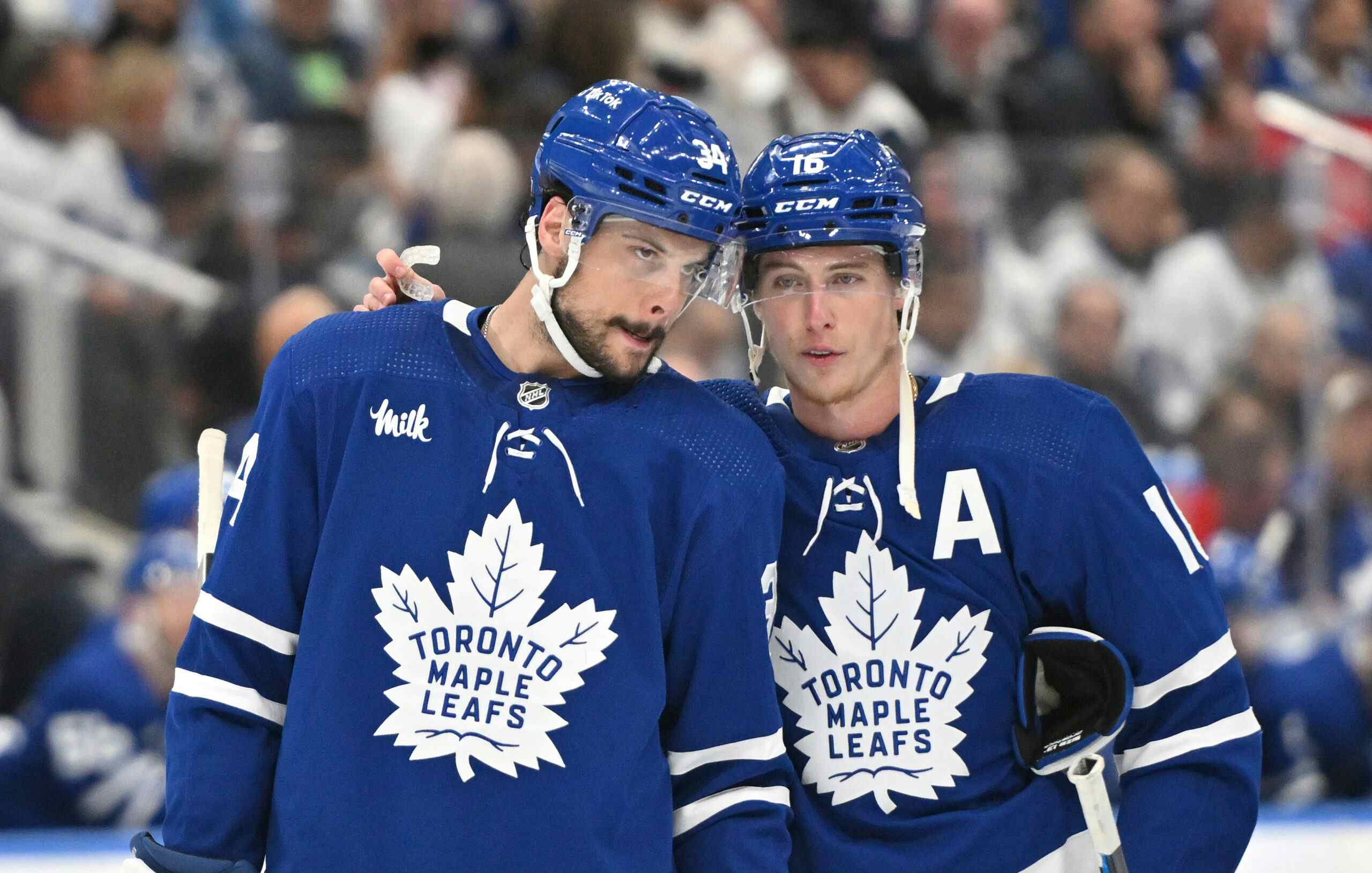Why Player Age May Shape the Maple Leafs’ approach to the 2015 NHL Draft

Photo Courtesy: LeafsTV
During Brendan Shanahan’s first time at the Toronto Maple Leafs’ draft table as team president last year, the club selected a pair of elder prospects in 19-year-old defenseman Rinat Vailev and 19-year-old forward Nolan Vesey, who is now playing for the University of Maine.
When Shanahan hits the draft floor for his second go-around as Maple Leafs president this weekend, he’ll have his own people in place. How much that could impact the Maple Leafs’ behaviour is anyone’s guess, but I’d bet heavily against the Maple Leafs selecting multiple second-time draft eligible players this time around.
At this point the ‘Outliers’ theory of hockey, and the ‘relative-age effect’ is well trodden ground, but we’ll get into it quickly because it’s a useful way to frame these issues.
The basic argument that Malcolm Gladwell makes in his book Outliers is that older hockey players, because of a slight edge in physical maturity over their younger peers, are provided with compounding advantages as they mature – whether it’s more attention from coaches or more on-ice opportunities or whatever. These players are then seen as the ‘best’ and continue to be more highly regarded than their peers moving up the minor hockey ranks all the way to the major junior priority draft and even the NHL draft, which serves to partially explain why so many professional hockey players are born in January and February. Or so theorized Gladwell.
A few years ago when he was still a lowly blogger, Rob Pettapiece took a long look at the impact of player age on the behaviour of CHL and NHL teams at the draft table. As it turns out, Pettapiece discovered that Gladwell’s theory was backed up by the data. Unfortunately Pettapiece’s two-part blog post on the subject no longer exists on the internet, but I thankfully summarized it at the time over at CanucksArmy.com, so we can revisit some of the core findings.
Players born in the first quarter of the year are over-represented at the NHL draft. This effect is especially pronounced at the OHL draft, where 44% of all players selected are born in the first quarter of any given year. While the effect is somewhat lessened for 18 year olds about to be drafted by NHL teams – the fact remains that a disproportionate number of players selected at the NHL draft (38% of all players) are still born in the first three months of the year.What Rob’s data shows is extremely interesting for our purposes. First off, his findings indicate that older 18 year olds are overvalued at the draft. Whenever a definable group appears to be overvalued, that means that there’s probably a market inefficiency that an aware General Manager can exploit, in this case by drafting the youngest group of players on the board in later rounds….According to Rob’s data, as a group, the youngest players drafted in later rounds outperform their draft slot by the most, and individually, produce the highest rate of over-performers. The oldest players (20+) rarely outperform their draft slot, though, they do produce individual over-performers at a comparable rate as the youngest group – and at a higher rate than any of the middle groupings.
Writing about Rob’s research few years later over at CanucksArmy.com, Cam Charron drew the obvious inference from Pettapiece’s data:
One observation I’d make is that NHL teams tend to leave a lot of raw talent on the table in favour of immediacy. At the draft, I’d prefer to see more teams look for home run swings rather than base hits up the middle. Being how difficult it is to turn players into superstars you want as many chips on the roulette table as possible.While a player like Jean-Sebastien Dea or J.C. Lipon may be enticing due to their scoring rates as 19-year-olds, I think that Gillis should concentrate on drafting eligible players born in 1995.
We don’t really know how much the Maple Leafs’ hockey research and development department will influence the club’s individual draft selections this upcoming weekend. Based on Pettapiece and Charron’s early research and writing though, one core tenant of their early work on the NHL draft was that teams can potentially accrue an advantage or exploit an inefficiency by selecting younger players on draft day.
It’ll be interesting to see whether the Maple Leafs follow their advice. Generally speaking, I expect they will, particularly in the later rounds of draft.
Draft season can make you hungry, and hungry people deserve fresh, fabulous pizza. With over 40 delicious recipes, fire-grilled wings, organic juices, breadsticks and fresh salads, we have something for everyone. Order online, give us a call for delivery, or pick up at a location near you. And, hey, if you’re in Toronto come visit us at our new 787 Bathurst Street location!

Recent articles from Thomas Drance





